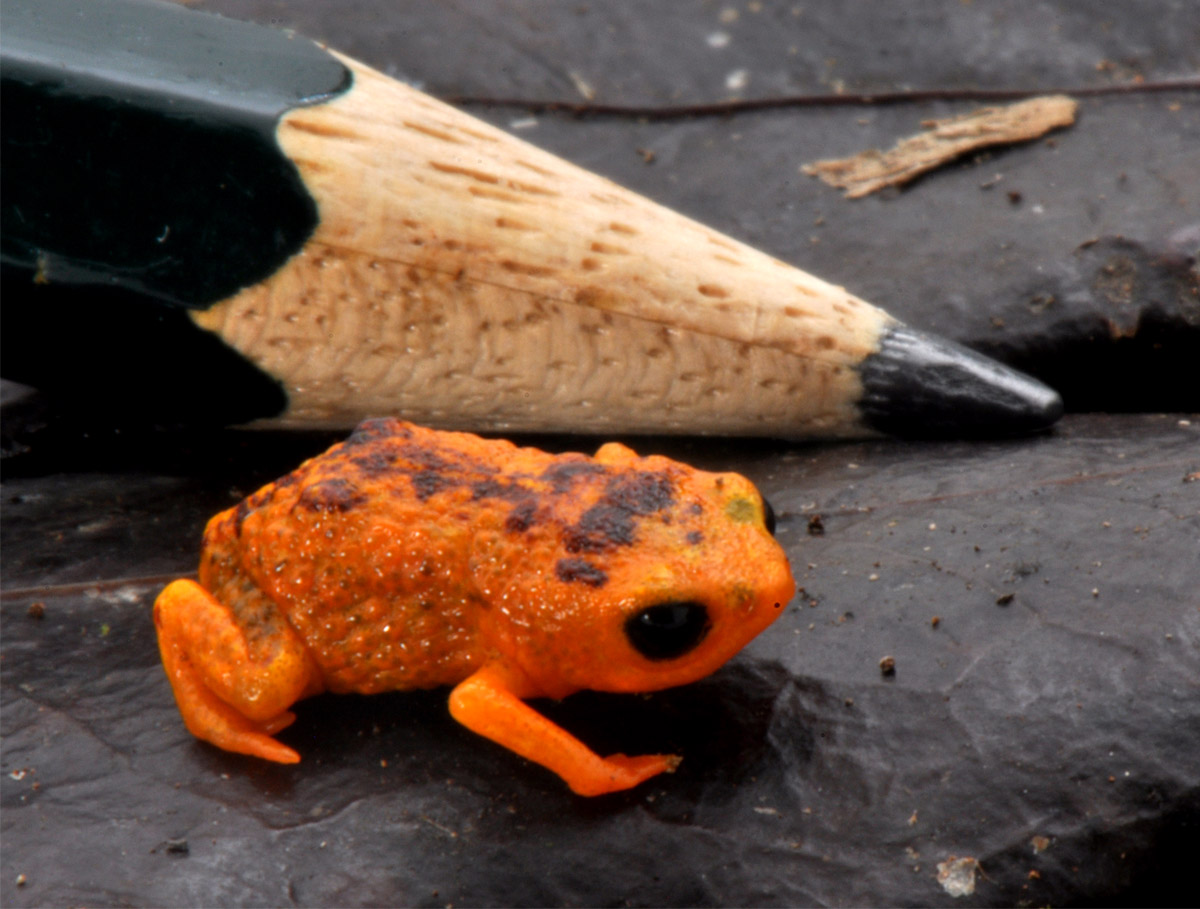Record-Breaking Robot Highlights How Animals Excel at Jumping
Introduction
In the summer of 2021, atop the coastal cliffs of Santa Barbara, California, Chris Keeley, then an undergraduate at the nearby university, crouched to pull a bundle of metal and rubber out of his backpack. It was a robot, which he spent several minutes winding up.
When he was done, he hit record on his iPhone’s camera and watched the robot launch itself high into the air, draw a tall arc in the sky and land neatly near his feet. Keeley was relieved; many previous test jumps had failed. It wasn’t until later that night when he returned to his bedroom and downloaded the jump data onto his laptop that he realized just how well it had worked.
The jumper had reached a record-breaking height of about 32.9 meters, as Keeley and his collaborators, led by Elliot Hawkes, a mechanical engineering researcher at the University of California, Santa Barbara, reported in April in Nature. Not only had it jumped more than three times higher than other experimental robots constructed for that task, it had jumped more than 14 times higher than any other creature in the animal kingdom. In all likelihood, their robot jumped higher than anything ever had on Earth.
“I think this is one of the very few robots that actually does outperform biology, and the way that it outperforms biology is incredibly clever,” said Ryan St. Pierre, an assistant professor in the department of mechanical and aerospace engineering at the University of Buffalo who was not involved in the study.
The success of the robot highlights the physical limitations that biological jumpers face in the wild. Though these limitations keep humans from hopping to the grocery store as if they’re on pogo sticks and prevent frogs from falling out of the clouds, biology has come up with its own ingenious workarounds that push jump height and length as far as they can go, through small biomechanical tweaks tailored for each animal’s jumping needs.
Even the engineers behind the world’s greatest jumper are still in awe of biology’s own designs. Now, “everywhere I look I see jumping,” Keeley said. “I can’t help myself.”
The Act of Jumping
A jump is an act of movement caused by the application of force to the ground without the loss of any mass, the researchers wrote; thus a rocket, which loses fuel upon launch, or an arrow, which leaves its bow, does not count.
Muscles are the biological motors that provide the energy for movements. In order to jump, you crouch down, contracting your calves and other muscles, a process that converts chemical energy available in the muscles to mechanical energy. Tendons, stretchy tissues that connect muscles to the skeleton, transmit that mechanical energy to the bones, which use that energy to push against the ground to propel the body upward.
Jumping works in surprisingly similar ways across sizes and scales in the animal kingdom — but some biomechanical design quirks allow certain creatures to push the biological limits. The power of a jump is equivalent to how much energy is available to the jumping mechanism per unit of time during push-off. The more energy your muscles generate and the faster you get off the ground, the more powerful the jump will be.
But as animals get smaller, their legs get shorter and are in contact with the ground for less time during launch. They therefore need to be able to release the energy for a jump with explosive suddenness. For these smaller creatures, nature came up with a creative solution: storing most of the jump energy in highly elastic tissues that work as biological springs, explained Greg Sutton, a professor and research fellow at the University of Lincoln in England.

Galagos, or bush babies, can jump phenomenally well because of extremely stretchy tendons in their legs.
Stephen Dalton/Science Source
When snapping back to their original length, springs can release that stored energy much faster than muscles can, which increases the power available for the jump. As a result, some of the very best jumpers in the biological world are ones that use springs.
For example, a grasshopper stores the energy of its hind leg muscles in springs located on the joints. Those springs, which look like lima beans, enable the grasshopper to put 20 to 40 times more power per unit of mass into its leap than a human muscle can. Though the grasshopper’s total power is far less than a jumping human generates, its power density, or power per unit of mass, is much higher. As a result, the grasshopper can jump to a height of about 0.5 meters — the same on average that humans can, but dozens of times the grasshopper’s body length.
The power boost that grasshoppers get from their springs pales in comparison with what some other tiny jumpers can muster. Fleas can achieve 80 to 100 times the power density of human muscles, while the insects called froghoppers can generate 600 to 700 times as much. The froghoppers’ secret is that their spring for storing jump energy is in their thorax; the extra distance for muscle contraction enables the delivery of more power. “It’d be as if your hip muscles, instead of attaching to your pelvis, attached to your shoulders,” Sutton said.
Merrill Sherman/Quanta Magazine
Some animals, such as kangaroos, don’t have separate springs in their biomechanical design, but they have more elastic muscular systems, such as tendons that store a lot of energy for jumping higher. The lesser galago, for instance — a superstar jumper among vertebrates — has extremely stretchy tendons with which it can leap more than 2 meters high, and up to 12 times its body length. (Human tendons store a little bit of energy and can act like springs, but they aren’t remotely as effective as the springier versions in other animals.)
Ratcheting
For at least half a century, researchers have analyzed the performance of some of these amazing biological jumpers to inform their designs of mechanical jumpers. But this new study might mark the first time that engineers designing mechanical jumpers have realized that “you don’t need to do what biology is doing,” said Sheila Patek, a professor of biology at Duke University.
The new robot reached record jump heights by overcoming a constraint on biological designs and doing what animals can’t. “Muscles cannot ratchet,” Sutton said. Even if muscles transfer the energy of their contraction to an attached spring, when they lengthen again, that energy is released. The energy available to drive a jump is therefore limited to what one flex of a muscle can provide.
But in the wind-up robot, a latch holds the stretched spring in position between cranking movements, so stored energy keeps building up. This ratcheting process multiplies the amount of stored energy available for launching the eventual jump. Furthermore, Sutton said, the square cross section of the robot’s spring enables it to store twice as much energy as biological springs, which have a more triangular design.
Why didn’t biological creatures evolve some ability to ratchet their muscles or otherwise move themselves higher, farther and faster?
Muscles are evolutionarily very old; they don’t differ that much between insects and humans. “We got muscles from our great-great-great-great-great-great-great backboneless ancestors,” Sutton said. “Changing fundamental properties of bits is really hard for evolution.”
Had there been more evolutionary pressure to jump really high, “I guess we would have evolved really high jumpers,” said Charlie Xiao, a doctoral student and co-author with Keeley and others on the new robot study. But frogs, grasshoppers and humans need to be built not only for jumping, but for reproducing, finding food, escaping predators and doing everything else that life requires.
Richard Essner, a professor of biological sciences at Southern Illinois University Edwardsville, explained how those trade-offs can work. There aren’t many situations where you’d want to jump straight up, he said. Most often, when frogs and other small creatures need jumping power, it’s because they are trying to escape a predator behind them. Then the frog wants to quickly place as much distance between itself and the predator as possible. The frog will likely decrease its takeoff angle, flattening its trajectory to jump farther rather than higher — but probably not the farthest it can, because hopping to safety usually involves a series of hops. Most frogs fold their legs under their body in midair so that upon the instant of landing, they’re ready to jump again.
Surprisingly, there isn’t always natural selection pressure to land properly after a big jump. Recently in Science Advances, Essner and his team reported that amphibians called pumpkin toadlets, some of which are smaller than the tip of a sharpened pencil, almost always crash-land when they jump. Their tiny size is at the root of their problem: Like other animals, the frogs get their sense of balance from the vestibular system in their inner ear. But because their vestibular system is small, it is relatively insensitive to angular acceleration, leaving the frogs ill-equipped to adjust for tumbling during a jump.

The bright orange amphibian called a pumpkin toadlet is terrible at landing. Because it’s so tiny, it doesn’t get hurt when it crashes.
Luiz F. Ribeiro
They’re not alone in landing badly: Grasshoppers are “just terrible at it” too, Sutton said.
In a project led by graduate student Chloe Goode, Sutton’s group is currently studying why grasshoppers spin uncontrollably during their jumps. In their experiments, they outfitted the insects with tiny weighted top hats to shift their center of gravity. The researchers found that this was enough to stop the grasshoppers from spinning in the air, which in theory might give the grasshoppers more control over their landing. Sutton and his team have no idea why the insects didn’t evolve with a little more weight in their head for that stability.
But while a crash landing sounds perilous to us as relatively massive creatures at risk of breaking bones, it’s less problematic for smaller creatures. “It’s a scaling phenomenon,” Essner said. With increasing size, body mass increases more quickly than the cross-sectional area of the supporting bones, which determines their strength, he said. Compared to an elephant, a mouse has a lot of bone shoring up its minimal mass.
Small creatures “just don’t experience any damage from falls,” Essner said. There may not have been strong enough selection pressure to oblige grasshoppers and pumpkin toadlets to evolve the ability to land properly, which freed them to evolve other abilities more important for their survival, Essner added.
Rethinking the Limits
The Hawkes team robot is undergoing an evolution of its own. The researchers are working with NASA to develop their device into a fully functioning robot that could collect samples on other worlds, using controlled jumps to quickly traverse long distances. On the moon, where there is no atmosphere, no air drag and only one-sixth of Earth’s gravity, the robot could theoretically jump more than 400 meters, Xiao said. Their hope is to launch it to the moon in the next five years or so.
And if there is life on other planets, it may have new things to teach us about jumping. At lower gravities, jumping could become easier and faster than flying, so organisms might evolve “Mario-like jumping characters,” Sutton said.
Alien life might also have muscles that work differently, perhaps with their own ratchet-like solutions to energy storage. “Maybe they have really ridiculous biomechanical structures, [such] that they can store energy in a much more complicated way,” St. Pierre said.
But even on Earth, animals continue to surprise researchers. As one cautionary study showed, the maximum jumping performance of an animal is not always what we might think.
Every year, Calaveras County, California, hosts a Jumping Frog Jubilee inspired by Mark Twain’s famous short story. At these fairs, bullfrogs are reported to have jumped 2 meters horizontally, “wildly outside of the realm of what it should be,” said Henry Astley, an assistant professor at the University of Akron. Bullfrogs had previously been known to jump at most about 1.3 meters. So about a decade ago, when Astley embarked on his doctoral work, he traveled to California to settle the issue.
At the jubilee, he and his co-workers rented some frogs, ate some funnel cake and got to work. By analyzing frog jump data from competition teams and members of the general public, they discovered the reports were not an exaggeration. More than half the jumps they recorded were farther than those in the literature. They eventually realized (and later detailed in what Sutton calls “the greatest jumping paper ever written”) that at least part of the reason for the discrepancy was that the motivations of the frogs differed. In the outdoor setting of the Calaveras County competition, the frogs were afraid of “frog jockeys,” people who performed whole-body lunges toward the frogs at high speeds. But in the lab, where such dramatic motions weren’t common, the frogs weren’t terrified of anyone; they merely wanted to be left alone.





